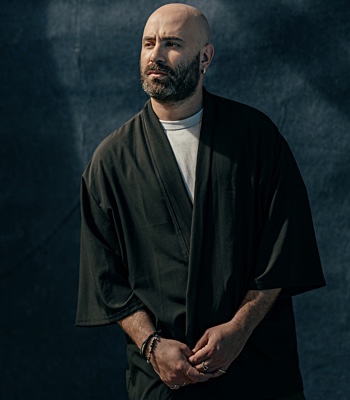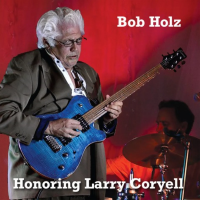Home » Jazz Musicians » Tina Brooks
Tina Brooks
Tenor saxophonist Tina Brooks was one of the unsung geniuses of the horn, a brilliant soloist with a pure, smooth tone and a mind that created patterns of great intricacy, logic and beauty. Almost his entire output as a sideman and leader was for Blue Note. His obscurity was a tragedy for the music as well as for him.
Harold Lloyd “Tina” Brooks and his twin brother Harry were born to David and Cornelia Brooks in Fayetteville, North Carolina, on June 7, 1932. They were the youngest of eight children. This close-knit family migrated en masse to the Bronx in New York City in 1944, when Harold was 12 years old. He was already being called Tina (pronounced Teena), a grade school nickname that came from his tiny or teensy size. Around this time, he started playing the C Melody saxophone. In addition to school instruction, he took private lessons with his older brother David Brooks Jr., whose nickname is Bubba. Tina moved from C Melody to alto and finally settled on the tenor as his instrument.
Meanwhile, Bubba was becoming established as an R&B tenor saxophonist. In 1950, he joined pianist Sonny Thompson's band. When he took a leave of absence in late 1950, Tina took his chair for a few months. In January of '51, Tina made his recording debut on one of Thompson's many King sessions done in Cleveland.
Throughout the early fifties, Tina worked with local New York Latin bands and various R&B outfits such as those of singer-pianist Charles Brown and trumpeter Joe Morris. In '53 or '54, he went on the road with pianist Amos Milburn. He then joined Lionel Hampton's orchestra for the spring and summer of 1955. But he found this to be little more than another R&B gig with little room to stretch out.
In 1956, Brooks met trumpeter-composer Little Benny Harris at the Blue Morocco, a Bronx jazz club. Harris took the young tenor under his wing and taught him the vocabulary and intricacies of modern jazz. Tina also developed a close friendship with the brilliant pianist- composer Elmo Hope. He was assimilating early influences (Lester Young, Dexter Gordon, Charlie Parker, Wardell Gray) and current models (Sonny Rollins, Hank Mobley) into a style of his own, which was rapidly taking shape.
Alfred Lion remembers Benny Harris calling him up to a Harlem club to hear Tina in late 1957. He immediately began recording Brooks on Blue Note at a regular pace. He first hired Tina for a marathon Jimmy Smith recording on February 25, 1958. The tenor saxophonist played on three lengthy sextet tunes. “The Sermon,” and “House Party,” two of Smith's most important and popular albums, each carried one of those tunes. When Blue Note recorded the organist at Small's Paradise that April with special guests (a session that was not issued until 1980), Tina was present.
Read moreTags
Freddie Hubbard: Open Sesame

by Chris May
Blue Note's two 180gm vinyl-reissue series--Blue Note 80 and Tone Poet--continue on their enigmatic going on erratic, but mostly magnificent paths. Tone Poet is billed as the audiophile option but, on a fairly limited sampling of both series, there seems to be little, if anything at all, separating the two in audio terms. The key difference is that Tone Poet has the more luxurious, heavyweight packaging. Whatever. It is the music that counts—and 22-year old Freddie Hubbard's 1960 label debut ...
Continue ReadingTina Brooks Quintet: The Complete Recordings

by Chris May
Mosaic Records' spring 2020 release The Complete Hank Mobley Blue Note Sessions 1963-70, the second of the label's box sets devoted to the copiously recorded (and rightly so) Hank Mobley, prompts thoughts of another of Blue Note's singular hard-bop tenor saxophone stylists. Unlike Mobley, Tina Brooks was woefully under-recorded, making just four albums under his own name. But like Mobley, Brooks had an instantly recognisable sound, was a spellbinding soloist and was also a gifted composer. In addition to his ...
Continue ReadingTina Brooks: True Blue - 1960

by Marc Davis
I love finding little-known records by almost-unknown artists. There's nothing wrong with soaking in the comfortable pool of guys you know oh-so-well. I can listen to Art Blakey, Jimmy Smith and Kenny Burrell all day. But even the greats can wear you out. How many times can you listen to the Beatles' “Hey Jude" before the na-na-na-na's get tiresome? For those moments, it's nice to sample a one-hit wonder. Tina Brooks is that guy.
Continue ReadingTina Brooks: Back To The Tracks

by Matt Marshall
Tina Brooks Back To The Tracks Blue Note / Music Matters 2009 (1985)
Although probably not the intention, Back To The Tracks appropriately labels saxophonist Tina Brooks' mode of operation during the 1960 Blue Note sessions that would produce this album. Going unreleased until Mosaic put it out in 1985 (the result of one of those head-shakingly dismissive or sad, number-crunching decisions seemingly so common in Blue Note's history), the record spins ...
Continue ReadingTina Brooks: True Blue

by Germein Linares
As with Minor Move and Back to the Tracks, Tina Brooks' True Blue is an album of hard bop excellence. Recorded in '60, it finds the tenor saxophonist accompanied by Freddie Hubbard on trumpet (a week after Brooks helped Hubbard on his debut album, Open Sesame), Duke Jordan on piano, Sam Jones on bass, and Art Taylor on drums. The six original compositions by Brooks are well-crafted, though none are stellar. The group's cohesive sound, its consistent blues-induced jazz groove, ...
Continue ReadingTina Brooks: True Blue

by Norman Weinstein
It is heartening to see an artist as obscure as tenor saxophonist Tina Brooks given the Rudy Van Gelder Edition treatment by Blue Note in this winning reissue. I have to admit surprise that Blue Note didn't marginalize Brooks, like Sam Rivers, in the label's limited-edition Connoisseur series. Frankly, Rivers is the more sophisticated artist with a potentially broader audience in my judgement, but Brooks has his lasting value also. There is a terrifically pensive blues cry ...
Continue ReadingFreddie Hubbard: Open Sesame

by Craig Jolley
Open Sesame (1960) was Freddie Hubbard’s first record as a leader. If it was his only record it would be legendary, but within two years he had recorded four better ones. What raised the other records above Open Sesame was the drummers: Philly Joe Jones, Elvin Jones, and Louis Hayes. There is nothing wrong with Clifford Jarvis—he swings, he interacts with the other players, and he fits the band’s conservative concept. But on his best records Hubbard fed off his ...
Continue ReadingBackgrounder: Tina Brooks - True Blue (1960)

Source:
JazzWax by Marc Myers
No other category of artist in American history had to fight harder to have his or her creativity recognized than the jazz musician. This war was waged on three fronts—with themselves, with the culture and with their record label. If any one of these three battles was lost, the other two often collapsed as well. In the 1940s and '50s, the battle with one's self meant steering clear of drug addiction. The battle with the culture was the struggle to ...
read more
Backgrounder: Tina Brooks, 'Back to the Tracks'

Source:
JazzWax by Marc Myers
Tina wasn't his real name. When Harold Brooks was young, he was nicknamed Teeny, which at some point wound up as Teena and then Tina. Between 1958 and 1961, the tenor saxophonist recorded five hard bop albums for Blue Note as a leader. There were plenty of Blue Note sideman dates as well. Back to the Tracks was recorded in September and October 1960 but not released until 1998, when producer Michael Cuscuna found the tapes in the Blue Note ...
read more












































